Planning a cut flower garden – grow beautiful blooms for decorating your home
Garden design experts share their insider knowledge on planning a cut flower garden – from mapping it out to choosing the plants
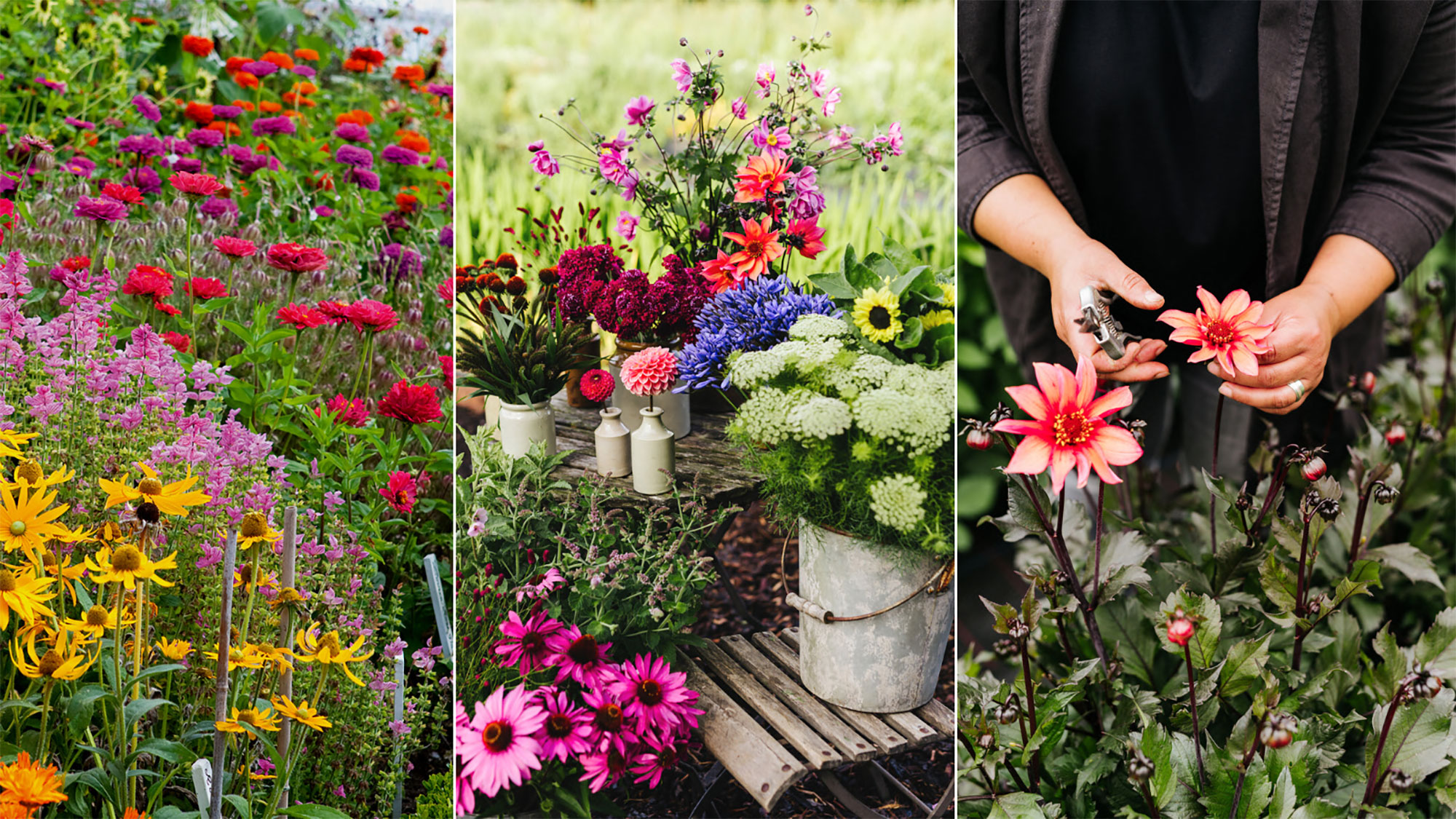

Holly Reaney
Many of us dream of planning a cut flower garden in our own backyards. It's easy to fall in love with the idea of strolling down the garden to harvest a horde of richly-colored blooms that we can then proudly display in our homes.
Thankfully, it's really easy to incorporate an area for cut flowers as part of your flower bed ideas. All you need is an empty plot of ground and a few packets of seeds.
‘Growing a cut flower garden is a much more sustainable way of growing flowers for arranging in your home and avoids buying ones that have been flown halfway across the world,' explains Amelia Bouquet, who trained in garden design at the English Gardening School. Plus, as Louise Curley, a garden expert from Amateur Gardening magazine points out, you can choose what you want to pick and arrange, rather than relying on what is available at the local florist or grocery store.
Just remember, everyone’s cutting garden is different, so pick the right flowers for you and your garden – and make sure they keep coming.
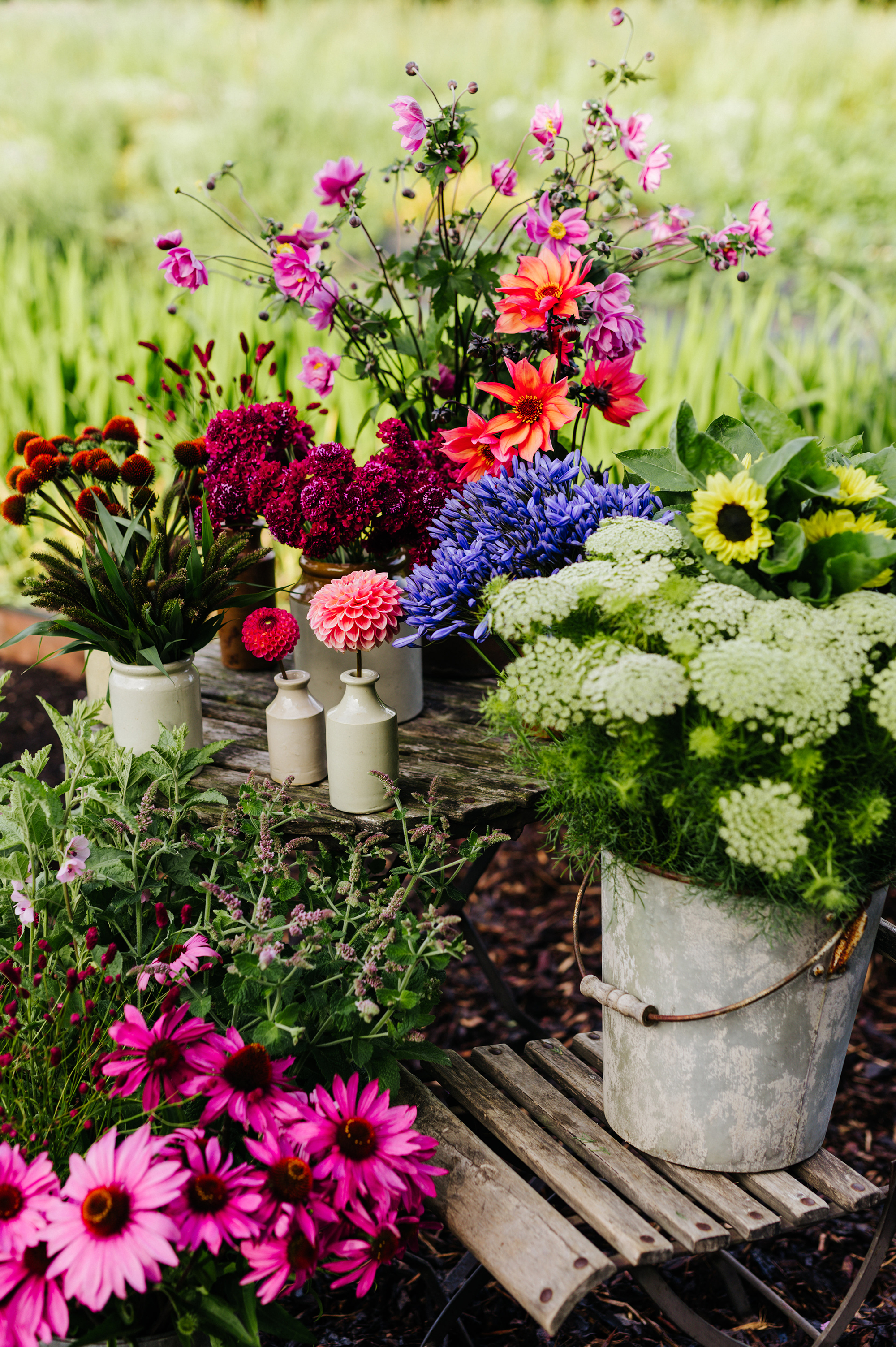
Simple steps for planning a cut flower garden
Before you get caught up in the blooms that you're going to plant, you must first consider the practical elements of planning a cut flower garden – namely its size, shape and position.
Knowing how to plant a flower bed is also useful in planning a cut flower garden, as this will help you design a space in which the flowers can thrive.
1. Map out your design
When planning a cut flower garden, it's a good idea to start by mapping out your design. The easiest way to do so is on paper. Pick your position and then draw out a scale replica of your backyard, including your new addition. This will help you to visualize how your cut flower garden will work in the space and also help you avoid issues once you start building.
One key consideration when planning a cut flower garden is accessibility. In terms of the shape of your flower bed, you need to be able to easily access all the plants and flowers for cutting. Therefore, it is a good idea to opt for a long, thin design where possible, rather than a thick bed. Remember to factor in lots of garden paths so you can walk around the bed. Ensure that your compost heap and water supply are nearby, too.
You will also need to think about how sunny the area gets. 'One of the main rules would be to account for ample direct sunlight – the most flashy flowers are usually those from perennials that receive a lot of sunlight,' recommends landscape designer Jonathan Fargion.
'Once you have established a sunny location, you might still want to grow something that does well in shade,' Jonathan continues. 'Here, you can strategize to use the taller plants so that they cast shadow onto the more shady ones. For constant ample light, plan rows in the direction east to west. If you want to cast shades, plant in rows in direction north to south.'
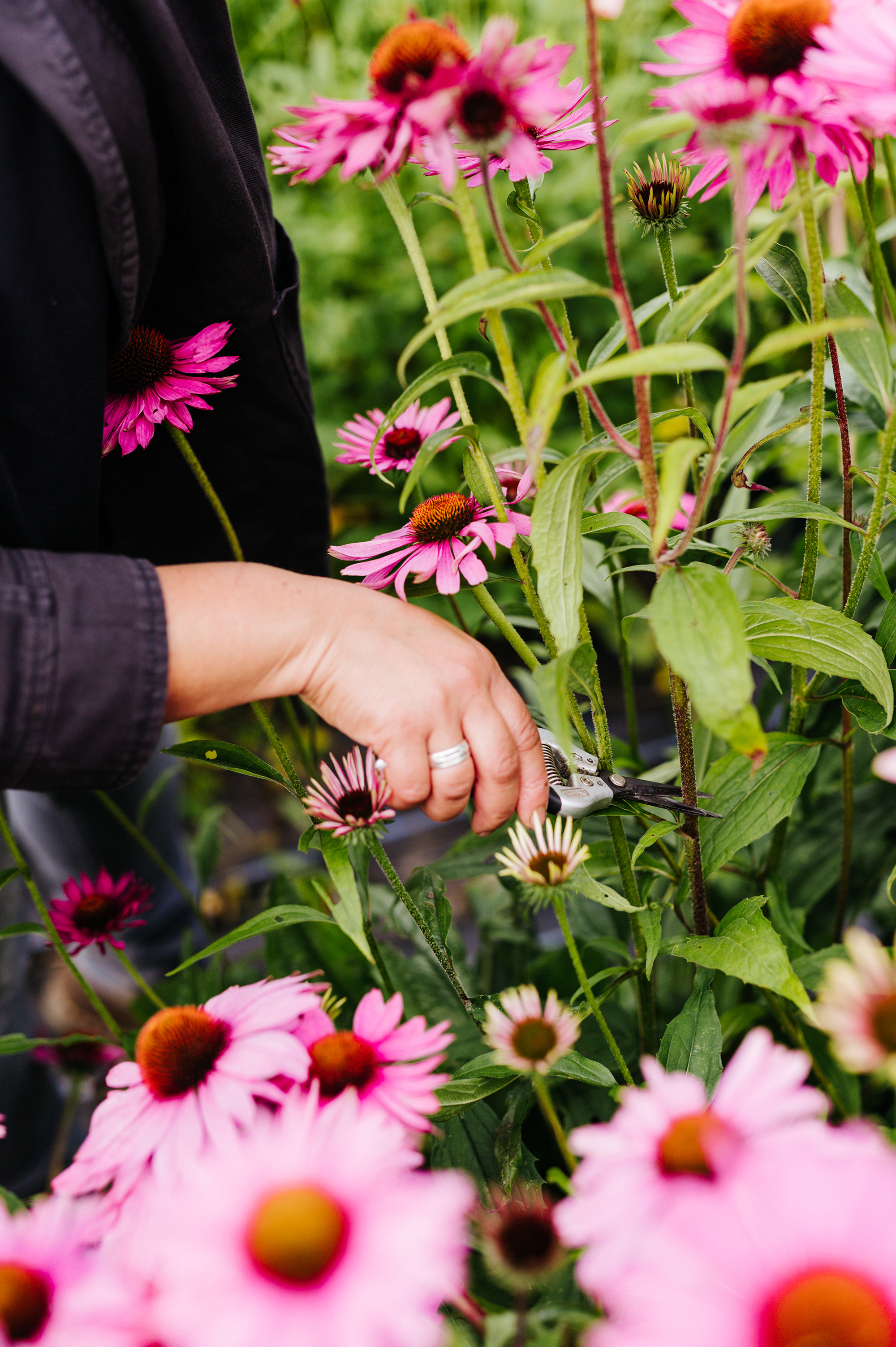
If you are concerned about the quality and depth of your soil, consider a raised garden bed for your cut flower garden. This will give you total control over the quality of the soil type and the soil health, thus increasing the health and productivity of your plants.
If you've not already added raised beds to your garden, learning how to build a raised garden bed is easier than you might expect.
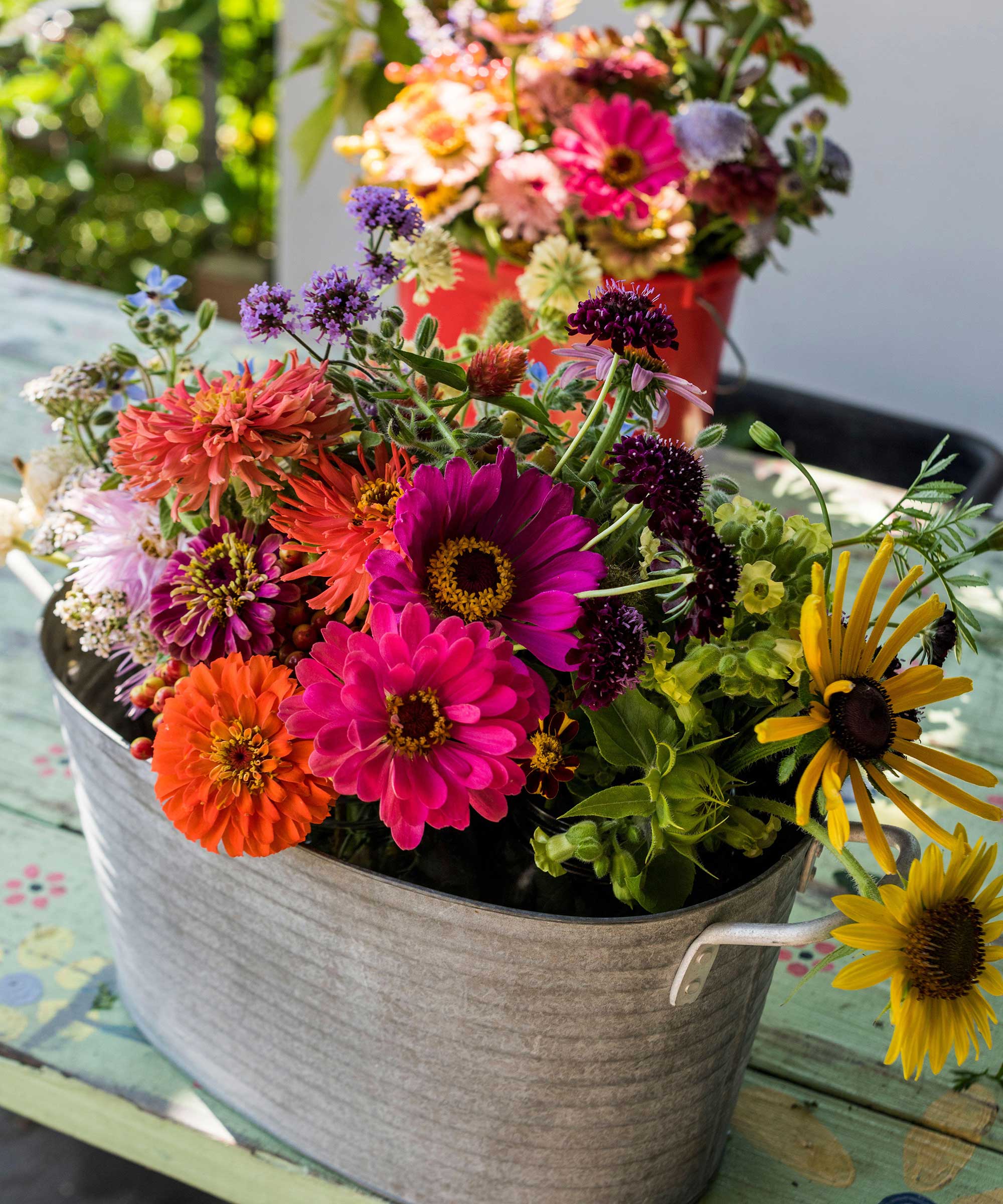
2. Choose your plants
'Plants that produce more flowers as you pick them should form the backbone of your cut-flower patch,' advises Louise Curley. 'So, make sure you include plenty of hardy and half-hardy annuals.
'You can extend the picking season by planting extra bulbs and some biennials – the likes of sweet William and sweet rocket – which are perfect for bridging the flowery gap between bulbs and annuals,' she adds.
Carien van Boxtel, who designed a cut flower garden for 2021's RHS Hampton Court Flower Show, agrees that it's wise to plan for successional flowering. ‘Use space as economically as possible, with one bed for multiple crops. Once spring bulbs have finished flowering, replace them with plants grown from seed, like cosmos and sweet peas,’ she says. If you're unsure where to start, these succession planting tips will help.
'For a year-round successional supply you could have options such as hellebores, spring bulbs, aquilegia, wallflowers, pinks, sweet William, peonies, alstroemeria, sunflowers, dahlias, asters, chrysanthemums, kniphofias and daphne in winter,' says Leigh Clapp, a garden expert from H&G. 'Include an abundant medley of self-replenishing, cut-and-come-again varieties, such as cosmos [a wide selection is available on Amazon], zinnias, scabious and sweet peas [also on Amazon], which will produce more flowers after cutting.'
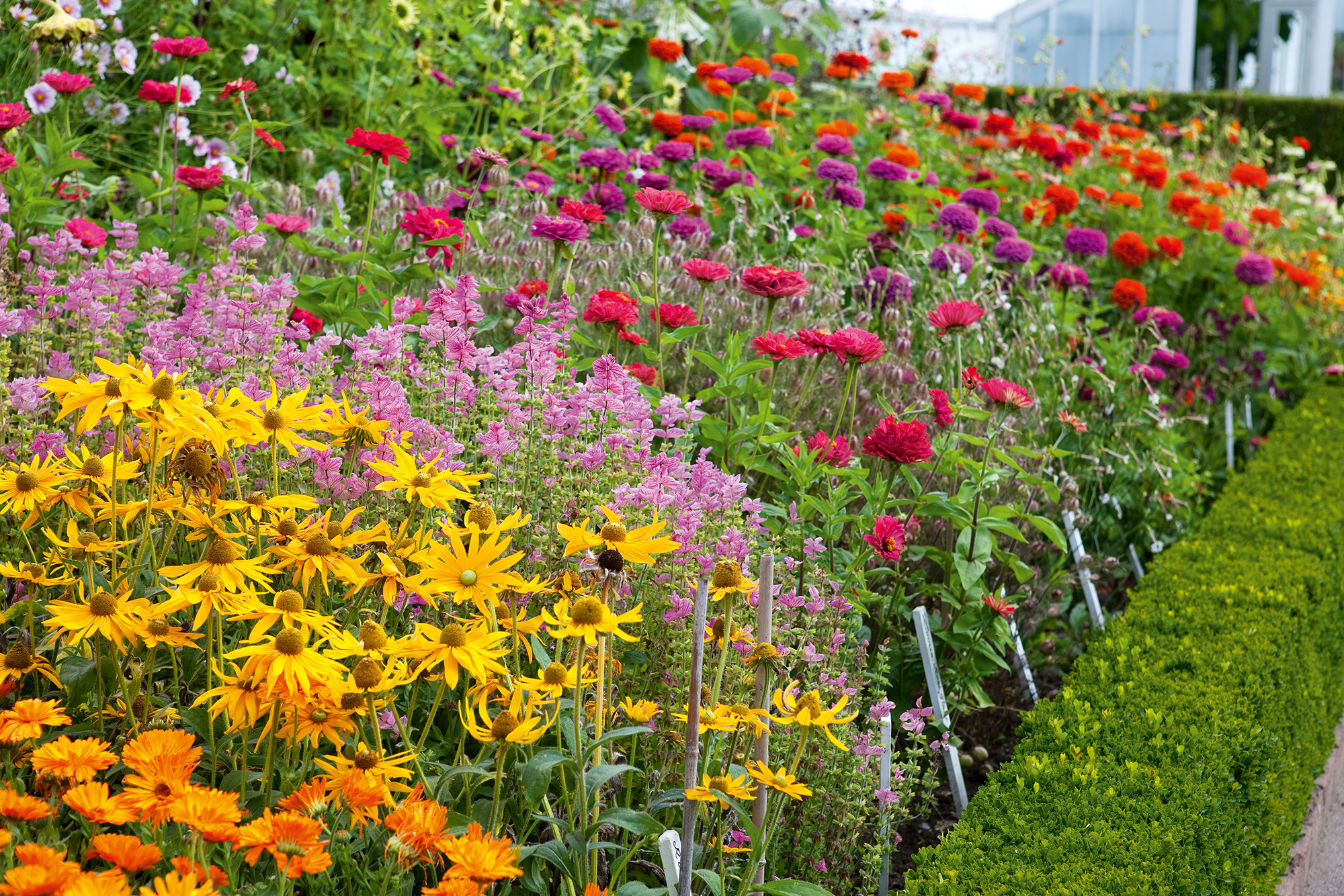
Foliage works the same way in the garden as in arrangements. When planning a cut flower garden, use it as a filler and to add interesting architectural shapes. The idea is to make your design as three-dimensional as possible.
'Always plant more foliage and fillers than you think you will need, as using plenty of greenery in your arrangements will make them look more natural and rustic,' says Leigh. Plant expert Sarah Raven agrees: ‘The more leafy stuff you use, the more your arrangement will look nicely home-made rather than florist-bought.
‘For primary foliage, I often use Euphorbia oblongata [pictured below],' continues Sarah. 'Its brilliant acid-green color adds brightness and contrast, and it’s one of the best foliage plants because it has a robust, upstanding structure. It also has thin stems but a generous horizontal top, so you don’t need huge quantities to create the right effect.’
Don't forget about pretty seed heads, advises Louise – those of nigella and opium poppies look great, for instance. These can be used fresh in summer arrangements, or dried to give a ready supply of material for fall and winter decorations, she says.
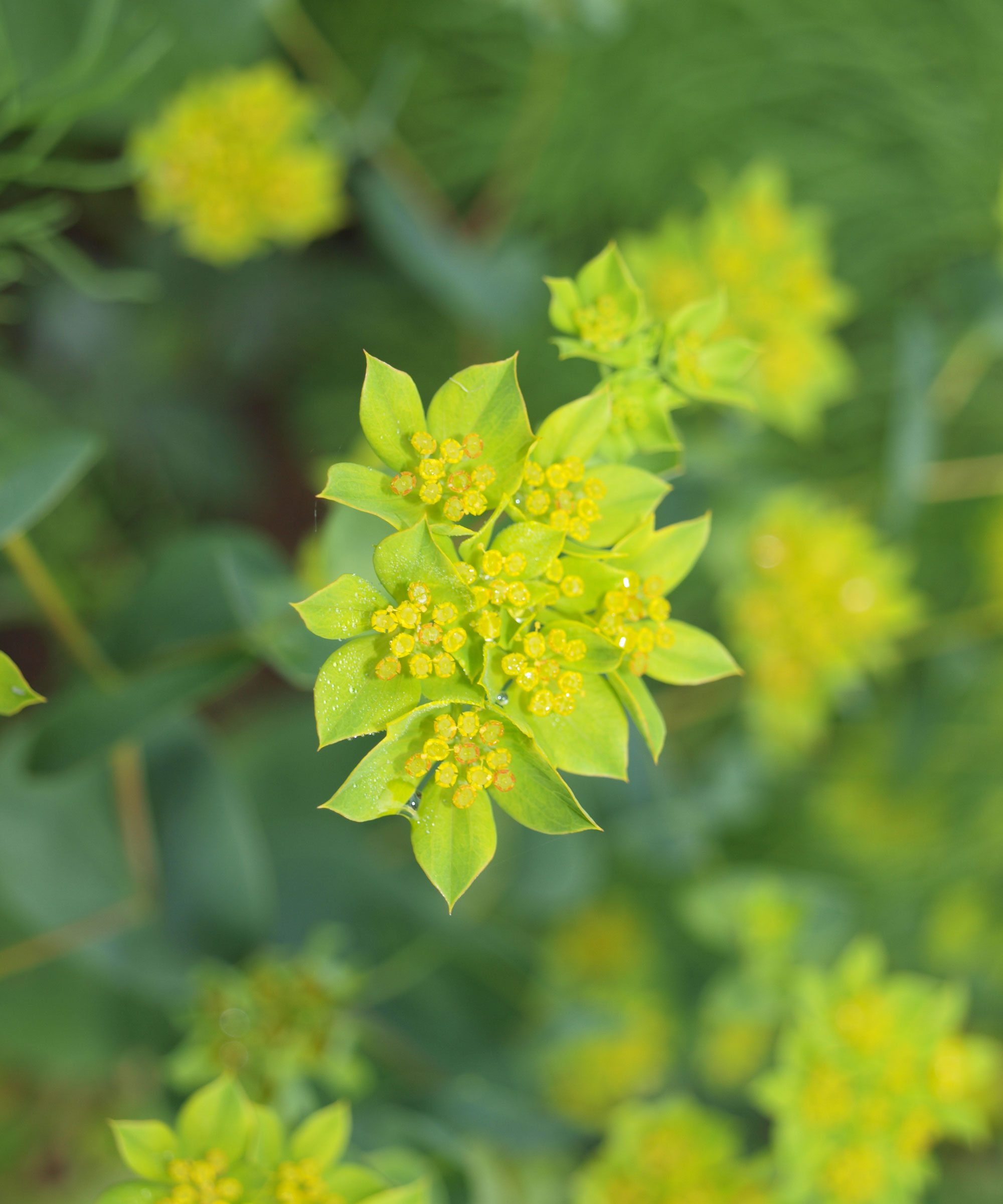
3. Dig the beds for your cut flower garden
Once you've finished planning the layout and planting picks for your cut flower garden, it's time to make it a reality. Mark out your beds and lift the turf. If you are using raised beds, these will need to be built.
The next step is to get rid of weeds, add in organic matter and rake the soil to a fine tilth, says Leigh. 'You may like to use a Mypex weed control mat to prepare a sterile weed-free seed bed.'
Then comes the long-anticipated planting. 'Plant flowers close together or put in supports ready to stop tall plants flopping over as they grow. Combine plants of similar heights, growing conditions and flowering times, including both focal flowers and fillers,' Leigh says.
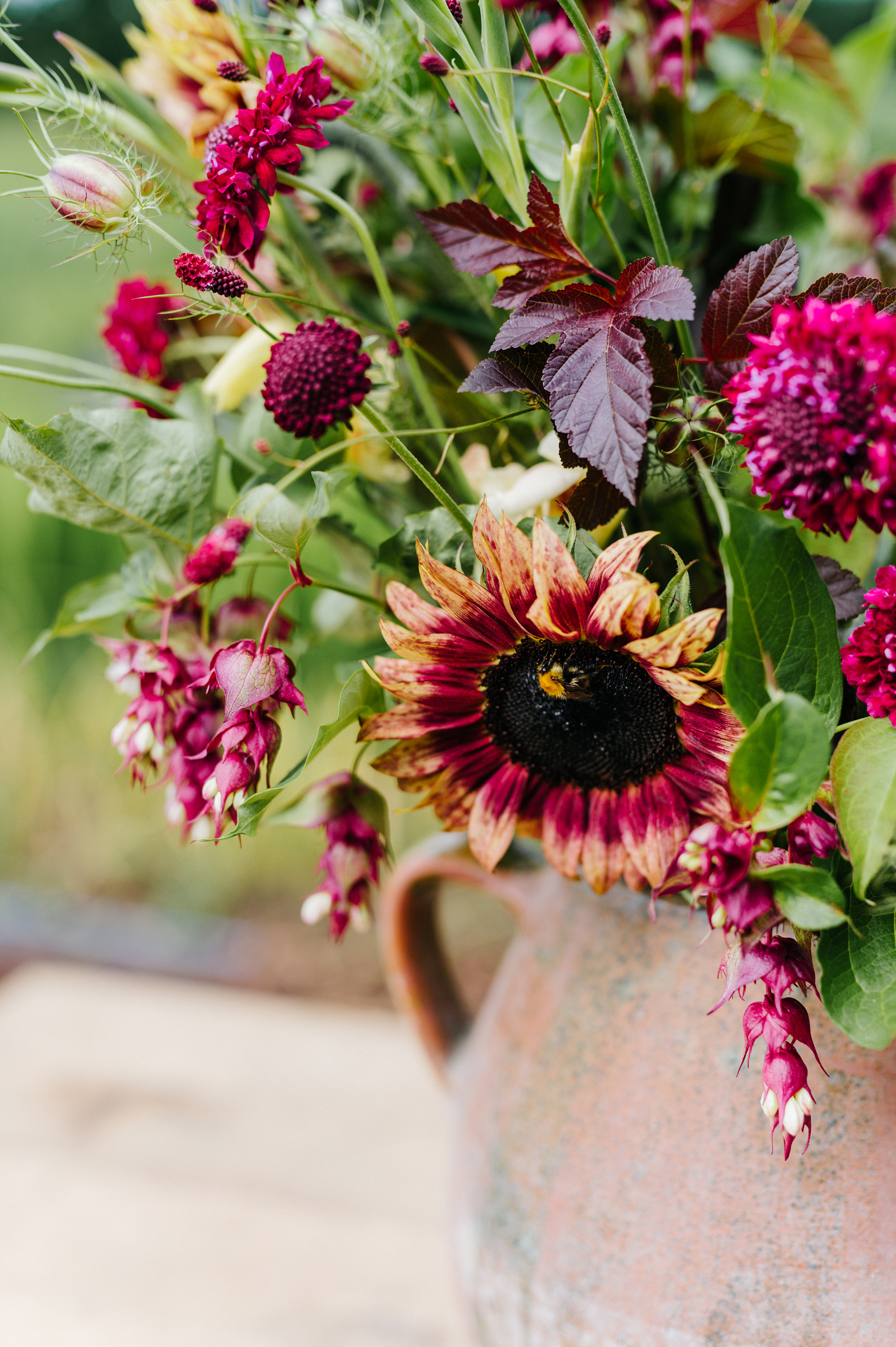
How to care for a cut flower garden
'A cutting garden is for harvesting; so don’t expect it to look pristine at all times,' says Leigh. For a regular supply of blooms, ensure you deadhead throughout the season. Pinch off the finished flower, just below where the base of the flower joins the stem.
'Let some of your flowers set seed and collect them to sow the following year, replenishing your own stock for free,' Leigh says. Simply wait until a dry day towards the end of summer, then take the dry seeds from a healthy plant. Shake the stem to let the seeds fall in a container or put a paper bag around the seed head and cut the stem before hanging it upside down to dry. Don’t forget to label them.
Keep up the watering and weeding, too. 'When watering, don’t shower plants from overhead, but water carefully with a steady jet flow at the base of the plant,' Leigh advises. 'The best time to water is in the evening, as it allows the plants to soak up what they need overnight. Mulching is valuable to retain moisture and suppress weeds.'
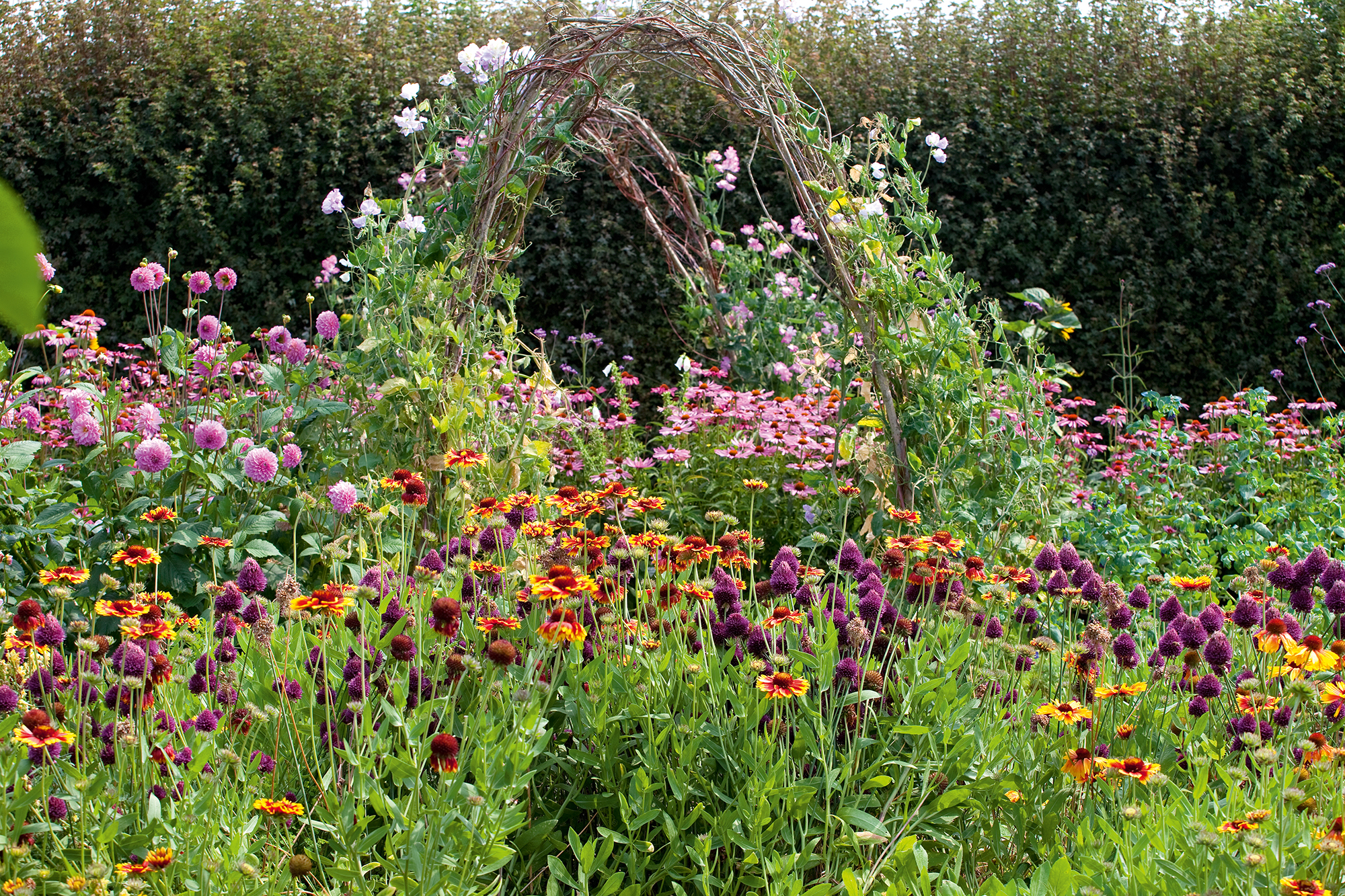
How to harvest cutting garden flowers – the right way
Cut your flowers when they’re about to show some color. Collect them in the early morning or early evening, when stems are full of water and are less likely to wilt, advises Louise Curley. Avoid doing so during hot and sunny weather.
Many annuals, such as sweet peas, as well as some perennials will bloom over a longer period if picked regularly. Follow the stem you want to pick until you reach the main stem and cut at this intersection. Do not leave parts of the stem behind.
'Have a bucket of water ready to plunge the freshly cut stems straight into,' Louise continues. Leave them in the bucket for a few hours, or even overnight, in a cool place before you start arranging.
When it's time to arrange your flowers, trim the stems at an angle, and remove any foliage below the water line, Louise says. Be sure to use tepid water in your vases. Every few days, refresh the water and re-cut the stems to help your display last longer.
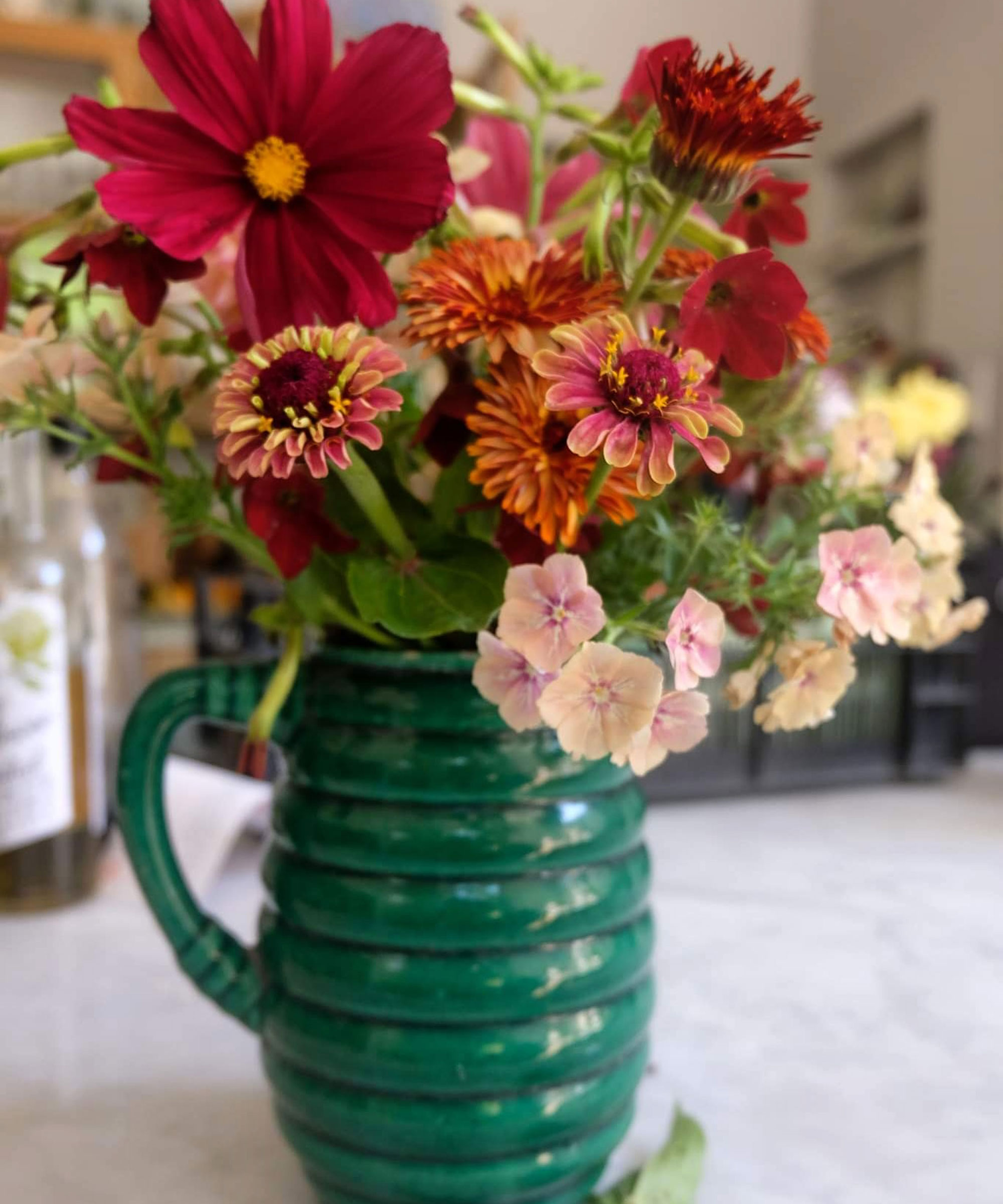
How much space do you need for a cut flower garden?
There are no rules on the amount of space you need for a cut flower garden. However, if you pick a spot with the potential for expansion, this will avoid any regrets further down the line.
Of course, you'll need to take the plants you plan to grow into consideration. 'The amount of space you need depends on the type of plants,' says Jonathan Fargion. 'Spacing should be calculated from the center of the plant. If you buy them in pots, think of the center of the pot as a point of reference. And always account for its mature size. Perennials can take about 18 inches from the center, while a shrub like hydrangea takes more space (things can always be controlled through pruning). As a rule of thumb, I'd space the perennials at 12 inches from the center and shrubs 24 inches from center, planted in rows that are 24 inches apart, to have space to attend the plants.'
If you are looking to add a cutting garden to your small garden, then create a perennial cut flower bed within your existing borders. ‘It means you don’t have to section off areas of ground when space is already tight,’ says Amelia Bouquet. While the general rule for cut flower gardens is to grow the plants in lines, this requires lots of space. Instead, you could combine cutting flowers in looser groups amongst other planting. Choose flowers that multitask, looking good in both garden borders and indoor arrangements, and intersperse with flowering shrubs and other garden stalwarts.
Sign up to the Homes & Gardens newsletter
Design expertise in your inbox – from inspiring decorating ideas and beautiful celebrity homes to practical gardening advice and shopping round-ups.
Lifestyle journalist Sarah Wilson writes about flowers, plants, garden design and gardening trends for Homes & Gardens. She has studied introductory garden and landscape design and floristry, and also has an RHS Level 2 qualification in the Principles of Plant Growth and Development. She is a regular contributor to Homes & Gardens and Livingetc. She has also written for Real Homes, Modern Gardens and Country Homes & Interiors magazines.
- Holly ReaneyContent Editor and Sub-editor
-
 9 things you can clean with glycerin – this cheap and natural cleaner is perfect for indoor and outdoor use
9 things you can clean with glycerin – this cheap and natural cleaner is perfect for indoor and outdoor useFrom patio furniture to silverware, this hydrating and gentle cleaning agent will work miracles
By Ciéra Cree Published
-
 Martha Stewart's houses – inside her most iconic properties, from Cantitoe Corners to Turkey Hill
Martha Stewart's houses – inside her most iconic properties, from Cantitoe Corners to Turkey HillThe lifestyle guru built her legacy around her homes, some of which are the most recognized homes in modern American history – we explore her portfolio
By Megan Slack Published